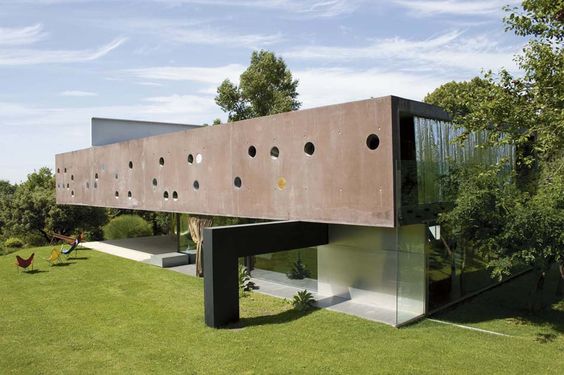“The Ancient Wonders – the world’s earliest megaprojects
Since the Industrial Revolution, megaprojects have grown exponentially. The impetus of megaprojects has become more pragmatic, and done away with myth and religion – or any reference to it, or the ancient wonders – altogether. They continue to morph into new territories that may have nothing to do with built structure – which is our focus here. They can be virtual megaprojects; for example, America’s Homeland Security and NSA surveillance infrastructures, or a former Secretary of State’s titanic political campaign exceeding $2.5B[i], more than the annual GDP of Ireland – indeed, the gargantuan undertaking of a fully powered presidential campaign has far more moving parts than any construction project. It is understandable that all of these virtual megaprojects are – in the collective conscience, in gross excess of their justification to exist, on so many levels.
 Past megaprojects are lost in our collective consciousness and lexicon in the same way that Antipater’s 2nd century BCE so called Seven Ancient Wonders of the World all but vanished; succumbing to earthquake, fire, or demolition. Had these sites not perished they would likely still be the Ancient Wonders. In our time, any megaproject is more likely to become a minor footnote, once it is no longer trending on Instagram.
Past megaprojects are lost in our collective consciousness and lexicon in the same way that Antipater’s 2nd century BCE so called Seven Ancient Wonders of the World all but vanished; succumbing to earthquake, fire, or demolition. Had these sites not perished they would likely still be the Ancient Wonders. In our time, any megaproject is more likely to become a minor footnote, once it is no longer trending on Instagram.
In the late 19th century – of the Seven Ancient Wonders, with only the pyramids extant – updating the list seemed like the thing to do. This marked the beginning of the end of megaproject ‘Wonders.’ Before too long, a cynical fin-de-siecle penchant for reordering the universe had the consequence of further fragmenting consensus on the subject, and deprecating its relevance. The list was variously shuffled and repurposed, and to this day, ultimately to become a mere marketing apparatus[ii] for respective trade groups, or a country’s Tourist Bureau.
Ultimately, the Seven Wonders became literal internet fodder in the 21st century, chiming in at a Google Trend score of about 12[iii] , roughly half that of Palisades Amusement Park, New Jersey.[iv] I.e., no one really cares anymore. The USA Today’s New Seven Wonders,[v] includes the Internet, as well as the (melting) polar ice-caps of Antarctica. The notion of the Internet as a wonder denotes the redefinition of the term megaproject for the digital age, and must be thought of as marking the onset of an abstraction comprising a wonder.
Can a megaproject occupy only virtual space? It can when a culture has exhausted its ability to achieve or sustain greatness in the physical world – or when a project design is never actually built – it can exist in virtual reality, until such time as it is shovel-ready. For some, the rise of digital infrastructural megaprojects is a menace to society:
The lack of a visible, accessible architecture of the internet is representative of a dangerous misunderstanding of the importance of its infrastructure to our common experience of the future city (Smith G. , 2015)
A rival of the USA Today wonders might be the practical American Society of Civil Engineers, whose list includes the Panama Canal, Chunnel, the Empire State Building, and the CNN Tower. In stark contrast to the Empire State Building, I daresay the only “wonder” of the Chunnel[vi] is that it was ever completed at all. Such are the vicissitudes and narrow-mindedness of those who sit on the committees who draw such lists.

a mere $5.5B for this megapuppy
Early ancient wonders were megaprojects that were generally treated with a level of care and exactitude that were intended to be commensurate with the size and importance of the commission, and sometimes the owner’s ego; however, their achievements often had even more to do with an imperative and motivation to perfect their work as a godly ordinance, and assurance of reward in the afterlife.
Compare those imperatives to the contentious bickering, backstabbing, and nebulous development of the Freedom Tower, or the plain silliness culminating in the gerrymandering of the height of its signal tower[vii] mast to reach 1,776 feet,[viii] and you have a view to the inner workings of multiple self-interested parties negotiating a complicated P3 (public-private partnerships[ix]) megaproject that needs be calculated in light-years. Add to that the scandal of a clearly plagiarized design, and a perfect storm was in the forecast.

Maison Lemoine, Floirac (France) by Rem Koolhaas. 1994-1998
Such is the inevitable fate of skyscrapers that have little to recommend themselves other than their size: the overbuilding of towers in the mid-east and China emphasize that no longer does size merit greatness, or what Koolhaas calls automonument.
This category of monument presents a radical, morally traumatic break with the conventions of symbolism: its physical manifestation does not represent an abstract ideal, an institution, an exceptional importance, a three-dimensional, readable articulation of a social hierarchy, a memorial; it merely is itself and through sheer volume cannot avoid being a symbol an empty one … (Koolhaas, 1978)
If our masterworks will be BIM designed, CNC or 3-D printer fabricated, and installed with assistive robots, we soon will virtually have no hand left in neither the creative, nor the building process. The future of built megaprojects lacking a human hand will be Orwellian. Think of Fritz Lang’s Metropolis, which foretold the future enthrallment of man to machine, almost one-hundred years in advance of the Internet. As the cost and resourcing of organic materials and manual labor becomes increasingly prohibitive, a world built by machines is inevitable.
If there were any more Wonders to visit, we would miss them anyway because we’d be too busy taking pictures with our Smartphones. People seem relatively satisfied and unconcerned with that reality as a consequence of media conditioning, attention deficit, and even rank philistinism. This complacency is, of course, the ambition of big media: to control or manipulate the public’s perception with strategic misrepresentation.
[i] http://www.huffingtonpost.com/james-heffernan/why-does-hillary-need-25-_b_7056586.html
[ii] https://en.wikipedia.org/wiki/New7Wonders_of_Nature
[iii]
[iv]
[v]
[vi] It was also 80% over budget.
[vii] A four-hundred foot signal tower was erected on top. The building’s height is measured from its tip.
[viii] In deference to the Freedom Tower, a luxury tower will be built to 1,775 feet.
[ix]









